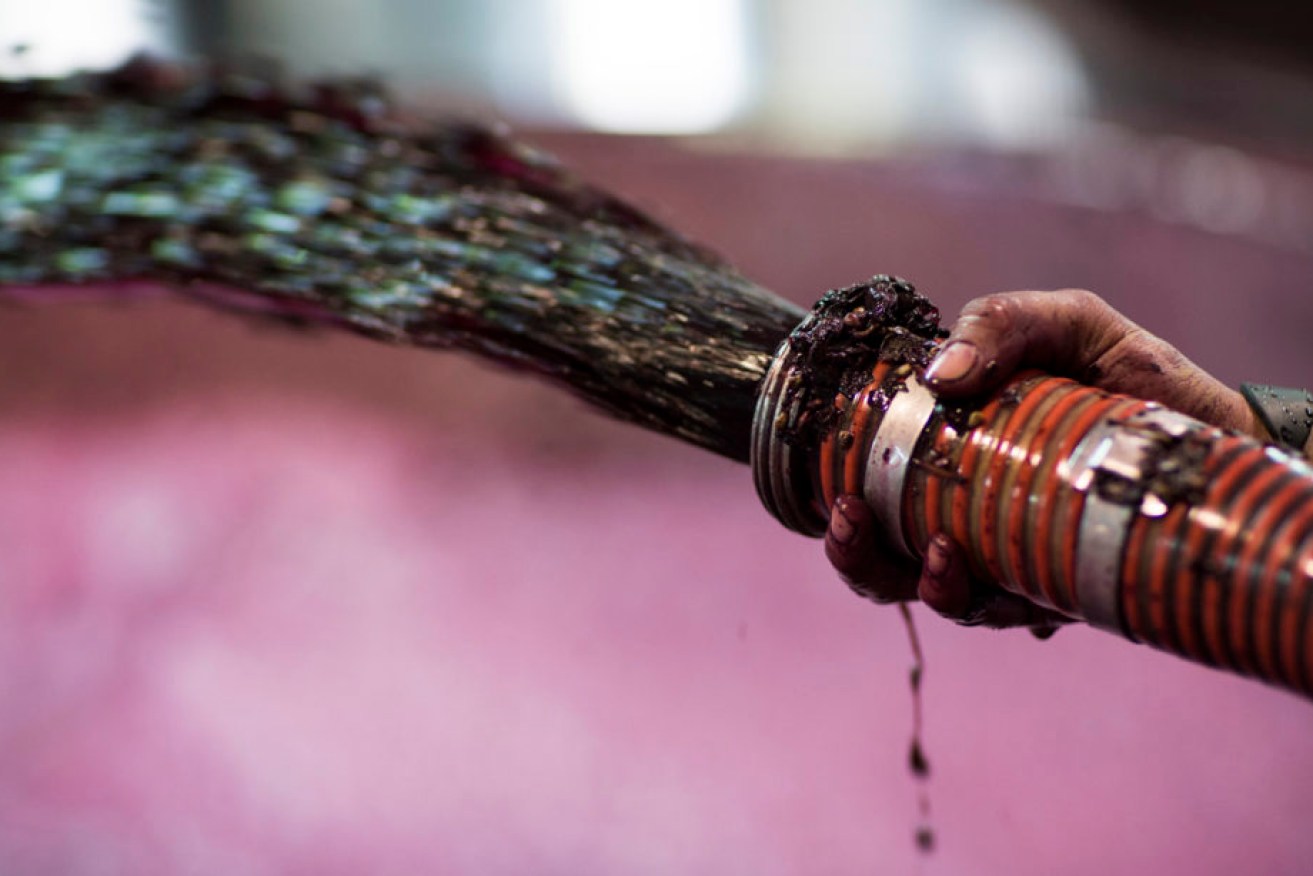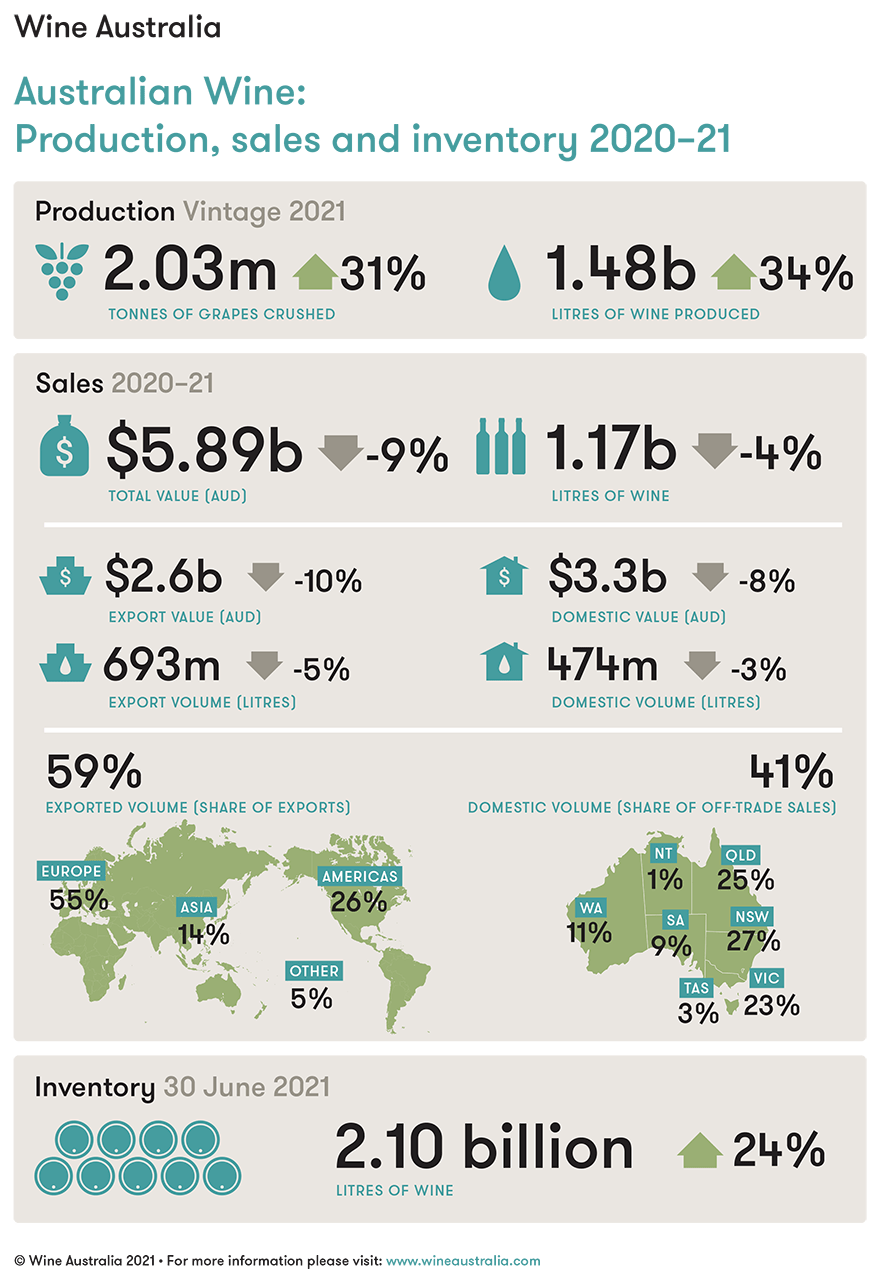Wine report confirms massive Australian glut
More than two billion litres of unsold Australian wine is sitting in storage following a record 2021 vintage and a slump in exports and domestic sales.


Wine Australia’s annual grape and wine sector report for the 2020–21 financial year, released yesterday, confirms that the national wine inventory levels of 2.1 billion litres at the end of June 2021 were the highest since 2005–06.
The additional wine in storage has built up suddenly, raising concerns about the availability of tank space ahead of the 2022 vintage.
Only one year earlier, Wine Australia announced that wine sales during 2019–20 exceeded supply for the third year in a row, leading to the lowest inventory levels of 1.7 billion litres since 2011–12.
The huge glut is a result of a 34 per cent increase in wine production in vintage 2021 to 1.48 billion litres, matched by a 4 per cent decrease in sales to 1.17 billion litres.
The increased supply also led to a softening of prices, with total sales down 9 per cent to $5.89 billion in 2020-21 compared with the previous year.
About 60 per cent of Australia’s wine production is exported.

Tariffs of more than 200 per cent were imposed by China’s Ministry of Commerce on bottled Australian wine on November 28 last year.
This resulted in a 10 per cent fall in export value in 2020-21 and a 5 per cent decrease in volume for the year. Domestic sales were also down 8 per cent in value and 3 per cent by volume in 2020-21.
The impact of the Chinese tariffs on prices and sales volumes are likely to be even greater next financial year.
Wine Australia Manager Market Insights Peter Bailey said the result was not unexpected after the record 2.03 million tonne crop, the reduction in exports to mainland China, and global shipping difficulties that made it more difficult to get wine into markets.
“The combination of these factors caused exports to decline by 5 per cent over the 2020–21 financial year,” he said.
“Within our domestic market, we are seeing a gradual long-term decline in the volume of wine consumption that is in line with other mature markets globally, combined with short-term COVID-related disruptions and some competition from imported wine.”
As a result of the increase in production and reduction in sales, the national wine inventory as at 30 June 2021 increased by 24 per cent to 2.1 billion litres.
Production of red wine from the 2021 vintage was 854 million litres or 95 million 9-litre cases, making up 58 per cent of production and increasing its share by one percentage point since 2020. White wine production was 628 million litres (70 million cases).
Bailey said based on these figures and preliminary estimates from the International Organisation of Vine and Wine (OIV), Australia was the fifth largest wine producer in the world, accounting for 5.7 per cent of the global 2021 harvest.
“The large volume of grapes harvested around Australia in 2021 compensated for two low vintages in 2019 and 2020, with the average of the three being just above the 10-year average of 1.74 million tonnes,” he said.
“The increased production combined with a reduction in sales is likely to put pressure on tank capacity for some wineries heading into the 2022 vintage.
“The report underlines the importance of market diversification as the key to long-term sustainability, while good communication between all players in the supply chain is critical to manage the short-term issues.
“However, there is no doubt that this is a particularly challenging time for the Australian wine sector.”
The impact of the China wine tariffs are being felt more in South Australia than anywhere else.
South Australia is responsible for about 50 per cent of Australia’s annual wine production and is known for its premium full-bodied Shiraz.
Chinese imports of Australian wine were dominated by red – about 95 per cent – particularly Shiraz.
Australian Grape & Wine Chief Executive Officer Tony Battaglene last month warned that pressure would be felt across all parts of the industry as producers scramble to find new markets in the wake of the China tariffs.
“We’re a resilient industry. We are going to get through this but there is no question that the next couple of years are going to be very tough for grape growers and winemakers,” he told Finlaysons Lawyers’ annual wine roadshow last month.




